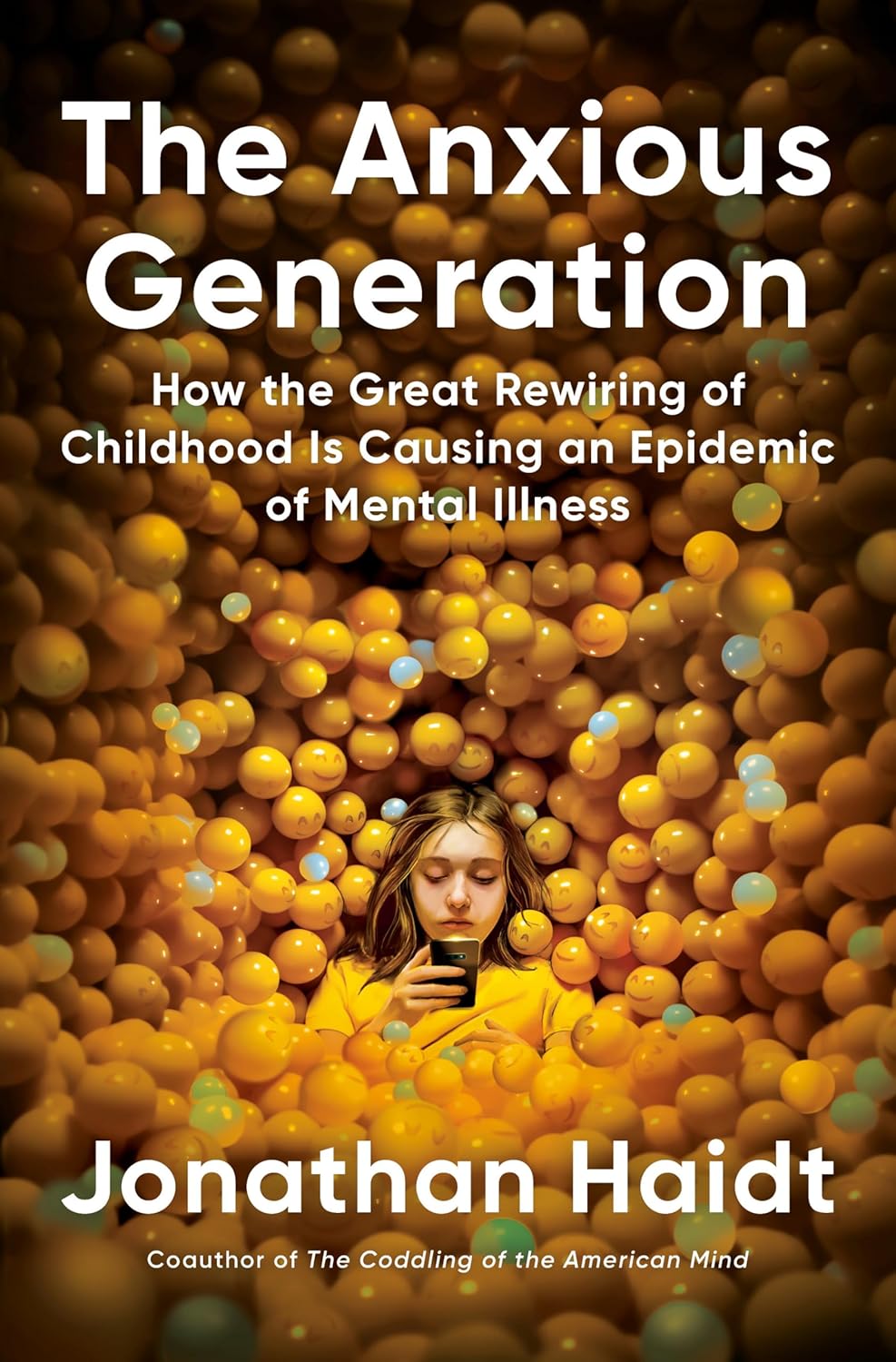As a parent, it’s natural to be concerned about the impact of social media on our children. In recent years, we’ve seen an alarming rise in anxiety, depression, and other mental health issues among young people. That’s why I was excited to dive into “The Anxious Generation” by Jonathan Haidt, a thought-provoking book that sheds light on this critical issue.
I really enjoyed reading this book, which offers a comprehensive analysis of how social media is affecting our children’s lives and the world at large. As someone who values play-based childhoods and more independence for kids, I found myself nodding in agreement with Haidt’s arguments throughout the book. Although, I’m not always the best at executing these principles in my own children.
One of the most compelling aspects of “The Anxious Generation” is its accessibility. Written in an approachable tone, Haidt breaks down complex concepts into easy-to-understand language, making it a must-read for parents and caregivers alike. The author’s passion for this topic shines through on every page, inspiring readers to take action.
What I appreciated most about the book was how Haidt tackles tough topics like social media addiction, pornography, and the impact of technology on relationships. He offers practical advice for parents, educators, employers, and policymakers on how to mitigate these effects and promote healthier habits among young people.
As a parent of Gen Z or Alpha children, I highly recommend “The Anxious Generation” as an essential read. It’s not just a book – it’s a call to action. By speaking up and supporting the four foundational reforms outlined in the book, we can create a better future for our children. Haidt encourages readers to connect with others who share their values, creating a powerful movement that will inspire positive change.
If you’re looking for a thought-provoking read that will make you think about your role as a parent and how you can support your child’s well-being in the digital age, “The Anxious Generation” is an excellent choice. Sign up at www.afterbabel.com to access Haidt’s Substack posts on related topics and join the conversation.
Rating: 4.5/5 stars
I highly recommend this book to anyone concerned about the impact of social media on our children’s lives. It’s a must-read for parents, educators, policymakers, and anyone who wants to make a difference in creating a healthier digital landscape for future generations.
